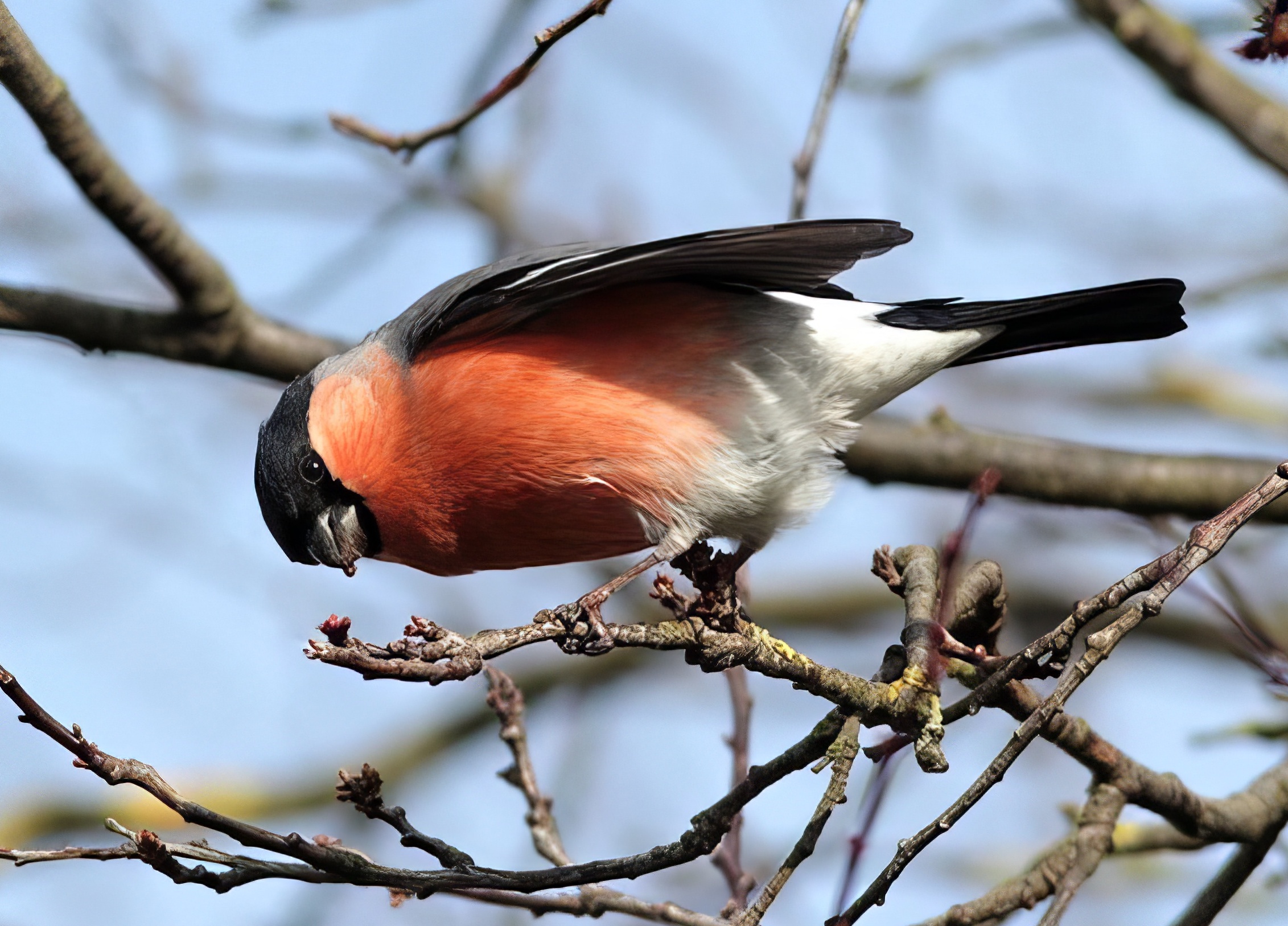Bullfinch Pyrrhula pyrrhula
British form pileata a common resident, but largely absent from the fens. Nominate Scandinavian form (Northern Bullfinch) a very rare irruptive visitor in autumn and winter.

The Bullfinch is a relatively sedentary, shy and secretive species and these latter traits make assessing its numbers difficult. From the mid-1970s until around 1980 it suffered a 50% decline in population. The decline slowed until it bottomed out around 2000, since when it gradually started to increase again. No good explanation of the decline is available. The Atlas found it widely distributed in the 1980s but missing from large parts of the Fens, unsurprising for a primarily woodland bird. The population at that time was estimated towards the lower end of 3,700-6,500 pairs. The long-term population change trend shown by BBS in the East Midlands from 1994 to 2018 is an increase of 28% and APEP4 adjusted, suggests a Lincolnshire population of 4,800 pairs in 2016. The peak one-day count recorded in LBR for the five-year period to 2018 ranged from 14 in 2015 to 33 in January 2017 at Whisby NP (most larger counts come from there). Snipe Dales near Horncastle had 18 in April 2018 and 24 in February 2020. There have been no recoveries of foreign-ringed birds in Lincolnshire. Those ringed locally are most often retrapped at the original ringing site, often over 5-6 year periods; a very few have travelled further - the longest distances were to Greater Manchester (118 km WNW) and Milton Keynes (131km SSW).
